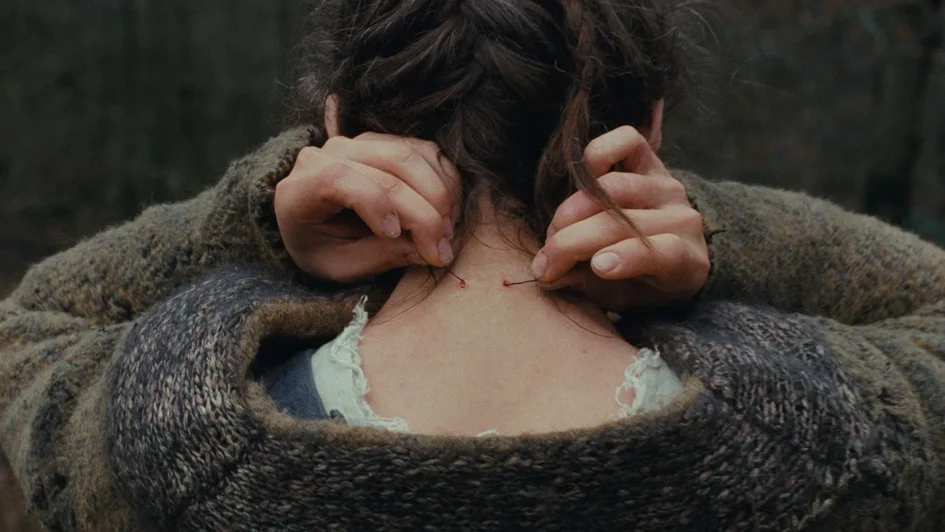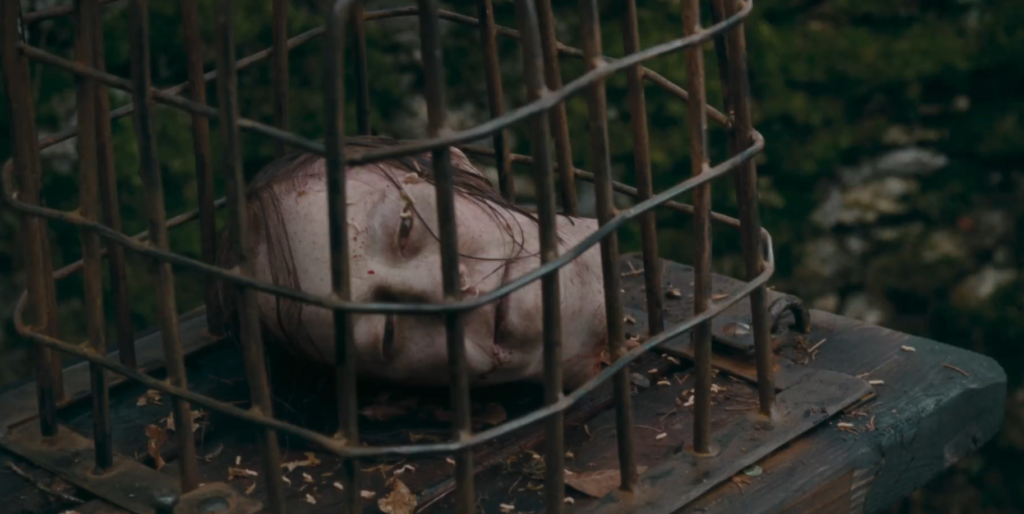Cheesy horror movie titles, especially ones that I remember from the ’70s and ’80s, are a special breed, reflecting the era’s enthusiasm for over-the-top thrills, gore and campy storylines. Titles like Chopping Mall, Slumber Party Massacre and Killer Klowns from Outer Space didn’t just tell you what the movie was about — they practically shouted it from the theater marquee. These names were often as outrageous as the plots themselves, promising audiences a mix of scares and laughs, with a wink and a nod to the absurd.
The titles gave a clear indication of what viewers could expect: not just horror but a darkly humorous, often ridiculous ride into a world where dolls come to life (Dolls), snowmen seek revenge (Jack Frost) and evil can lurk anywhere — even a shopping mall. These films and their attention-grabbing titles embraced a sense of irony and playfulness that horror fans still celebrate today.
When I saw that Shudder was releasing a film called The Devil’s Bath, I was instantly transported to that nostalgic state of mind, recalling the campy horror titles that promised thrills with a heavy dose of dark fun. I assumed it would be another supernatural romp, filled with ominous rituals and maybe a few jump scares. I didn’t even bother to read the synopsis — a choice I soon regretted, as I was completely unprepared for the deeply unsettling experience that awaited me mere moments into the film.
Instead of the expected horror cliches, The Devil’s Bath plunged me into a dark and disturbing narrative that felt more like a psychological nightmare than a simple scare-fest.
The film opens with a haunting scene: a woman, cradling a cooing baby, calmly hurls the child off a waterfall to its death. After committing the act, she seeks out the local clergy, confessing her crime, only to meet a brutal end herself; being dismembered and having her corpse transformed into a twisted altar.
The following day, Agnes (Anja Plaschg) marries Wolf (David Scheid). Knowing of Agnes’ deep desire for a child, her brother gifts her a relic — a finger taken from the executed child-killer — believing it will help her conceive. But when their attempts to start a family fail, Agnes begins a slow descent into madness, each step drawing her closer to darkness and ultimately leading her down a path of damnation.
The Devil’s Bath delivers a dose of folktale horror that aligns more with the unsettling tones of The Witch or Midsommar than the campy romp I’d anticipated. These films explore the weight of societal expectations on women, often exposing the oppressive forces of religious ideology and cultural tradition.
In The Devil’s Bath, Agnes embodies the “failed wife” trope, bearing the full weight of her inability to conceive — a perceived shortcoming that strains her marriage and isolates her further. The blame falls entirely on her, while her husband, Wolf, remains unscathed by the same societal scrutiny, despite his own struggles, including a drinking problem and possible homosexual tendencies that worsens their marital challenges.
This skewed view highlights how traditional beliefs trap women in cycles of blame, positioning The Devil’s Bath as a critique of those forces. In Agnes’ struggle, the film reflects the emotional and psychological toll of a society that reduces women’s worth to their fertility and obedience, using horror to reveal how deeply these norms haunt and endanger its characters.
Unfortunately, The Devil’s Bath suffers from a sense of monotony that ultimately dulls its impact. While the FX team invests heavily in depicting Agnes’ physical and mental deterioration, the underlying causes of her suffering — her fraught relationship with Wolf, tensions with his domineering mother and the oppressive norms of their village — stagnate, failing to evolve throughout the film. As a result, the story grows repetitive; over its two-hour runtime, we witness Agnes’ descent from a vibrant, hopeful bride to a tormented, ghostly figure, but no one else changes or responds to her unraveling.
This lack of development in the supporting characters — who should logically react to Agnes’ visible decline — feels inauthentic and ultimately frustrating, as though the world around her is blind to her plight. It becomes boring at points, testing my ability to stay focused.
The Devil’s Bath earns three out of five stars. Like many films in the folk-horror subgenre, we see how oppressive religious practices and beliefs have belittled women for ages, leaving them to seek other gods to worship for empowerment. Agnes is a tragic figure who viewers will be able to side with but may find themselves unable to fully get behind.
Also, the film is slow, plodding and feels repetitive. If you prefer horror with a steady, unvaried tone, this film may suit you; however, for those seeking dynamic storytelling and layered character growth, The Devil’s Bath may test your patience.
Its unchanging atmosphere drained my attention several times, leaving me more detached than engaged.

